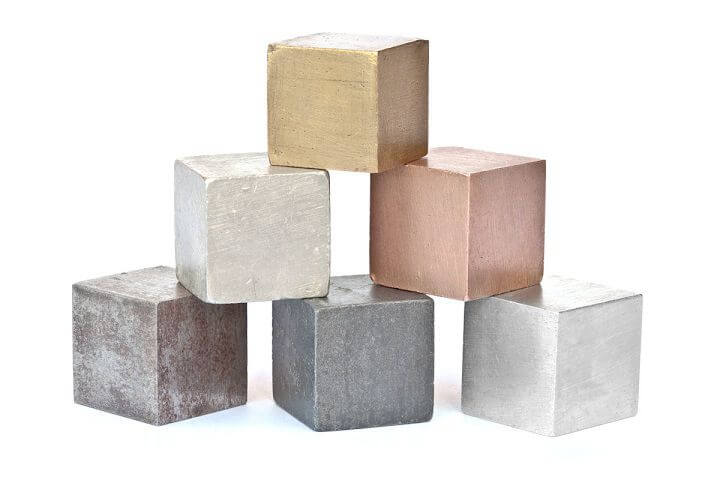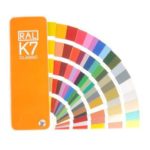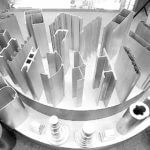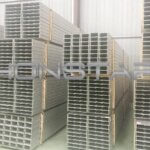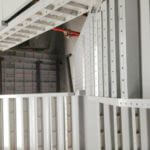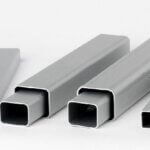The factors that determine aluminum application
The factors that determine aluminum application
The only valid reason for choosing a material is that it performs required functions at the lowest overall cost.
This result can be achieved in three general ways:
First, the chosen material may be lower in the first cost.
Second, it may be more economical in the long run because of lower maintenance costs.
Third, it may have special characteristics peculiarly suiting it to the application.
The factors that determine aluminum application
Although this third factor may be combined with one or both of the others, the discussion is simplified by considering each factor separately.
First Cost
There are a few applications for which aluminum is more economical than practical alternates simply on the basis of ingot price; an electrical conductor is an outstanding example.
Copper is the only other general-purpose metal used for conductors, and aluminum is less expensive even on a per-pound basis.
To make a realistic comparison of the basic cost of copper versus aluminum for conducting electricity, the conductivity and density of the two materials must be considered.
Electrical conductor (EC) grade aluminum is rated at 63% IACS (International Annealed Copper Standard). Combining this conductivity measure, which is on a volume basis, with the densities of the two metals yields the result that 0.22 kg of aluminum has the same conductive capability as 0.45 kg of copper.
To complete the cost comparison it is, of course, necessary to make allowances for fabricating both materials into final form.
The complete analysis of cost usually leaves aluminum with a clear advantage when the conductors are large, as for transmission or distribution lines.
For smaller conductors, such as house wiring, the saving in cost of the wire is generally not sufficient to justify the effort required of the small user to learn to handle a new material.
With very fine wire, such as is employed for winding fractional horsepower motors for household appliances, fabricating costs overshadow metal costs, and copper is normally used.
This example of electrical conductors illustrates one type of relationship of metal cost to over-all cost of the final product.
A similar situation exists in the competition between zinc and aluminum in die-castings.
Aluminum is cheaper on a volume basis, and this results in a price advantage for aluminum in large castings.
Smaller parts, and those that have very thin sections, usually cost less in zinc because its lower casting temperature permits longer die life, better lubrication, and thinner sections.
Aluminum die-castings have the advantage of being lightweight, but zinc is more economical to chromium plates.
Automotive usage of the two materials reflects these influences.
Stainless steel is frequently in competition with aluminum for parts and structures requiring resistance to weathering or other corrosive environments.
The ingot price advantage of aluminum is maintained in fabricated products such as sheets and plates.
There are a few applications where lead and aluminum are in competition; price favors aluminum.
Although these two metals are similar in their ability to withstand the effects of time and atmosphere, they are otherwise so different that comparisons are difficult, unless a specific application is considered.
Steel has the largest share of the metal market, largely because of its ability to fulfill so many, varied requirements at the lowest cost.
Aluminum is more economical than steel only when one or more of its special characteristics can be utilized.
Cost Over Service Life
A most important factor contributing to the increasing use of aluminum for outdoor structures is the low cost of keeping it presentable in appearance and sound structurally, with minimum expense for field chipping, spot priming, and repainting.
Many highway accessory items, such as signs, railings, and lighting standards, are so expensive to paint in the field that the cost of a single repainting equals the additional price of aluminum.
Sometimes the cost of shutting down equipment for painting or other maintenance is an important consideration.
Aluminum structural alloys have been used in outdoor electric switching stations on this basis for nearly 20 years.
The widespread use of aluminum for house siding, rain-carrying equipment, and other items for residential construction stem from consumer appreciation of the ease of maintaining aluminum.
A final consideration in the over-all cost of any piece of equipment or structure is its residual or scrap value.
Aluminum can be remelted with little loss due to oxidation, and even rather complex structures such as aircraft justify the effort of reclaiming them for the metal values contained.
Good melting scrap is readily marketable, and this factor should be considered in assessing the over-all cost of an aluminum structure.
Performance
Every application of aluminum involves consideration of its performance compared to that of other materials. Lightweight is the basic reason for using aluminum in all types of transportation equipment, as well as in moving and movable parts in general.
The list of applications predicated on lightness is almost endless, but other capabilities are usually required, to the extent that it is sometimes difficult to assign a top priority.
The universal use of aluminum for aircraft structures probably represents the most exacting — and at the same time the most economically rewarding — use of the highest-strength aluminum alloys where weight saving is the primary requirement.
A conservative figure for the value of a pound of “lightness” in a modern long-range civil transport is $2500.
Resistance to weathering is equal in importance to lightweight in the number of applications and volume of metal consumed.
Those aluminum alloys that are especially formulated for outdoor exposure are regularly used without paint or other protective finish.
Numerous installations have been exposed for 30 years with no loss of structural integrity, an acceptable level of architectural appearance, and no maintenance other than the cleaning effects of rain.
Closely associated with its resistance to weathering is the performance of aluminum in combination with organic coatings.
Properly applied paint coatings on aluminum exhibit maximum adhesion, and local penetrations of the coating seldom expand.
This characteristic is largely responsible for the extensive application of aluminum siding for residences.
High electrical conductivity was mentioned before compared with other metals. Even when reason ruble conductor size and nonmagnetic characteristics are of no concern (as in the third rail for electric railroads using direct current), aluminum can provide a given current-carrying capacity at a lower per-foot cost than steel, copper, or any other material.
The high thermal conductivity of aluminum parallels its high electrical conductivity.
Heat exchange equipment, including cooking utensils, requires many other characteristics; thus, thermal conductivity does not control the application to the same extent that electrical conductivity does in its field.
However, aluminum is used where the basic function is the conduction of heat; its other capabilities contribute to the final choice.
The chief function of the cast aluminum sole plate in a hand iron is the conducting of heat from the heating element to the cloth.
The lightweight is attractive to the housewife, and the manufacturing economy (the element is “cast-in”, and no protective finish is required) results in a favorable price.
The low modulus of aluminum causes complications in applications where space is strictly limited and deflection also must be held to a minimum.
Such conditions are rare, and they are perhaps balanced by other situations where a large elastic deflection is desirable.
Aluminum diving boards utilize the large deflection resulting from low modulus, and truck bodies for hauling rock also exploit the increased energy absorption in resisting permanent denting.
It is interesting to note that a considerable group of important structural materials have nearly the same ratio of modulus of elasticity to density.
Steel, aluminum, magnesium, and titanium are close. Wood is not far from this range.
Copper, lead, and cast iron are much heavier in relation to modulus, whereas beryllium is lighter by a factor of about 4 in relation to its modulus of elasticity.
Aluminum alloys, in general, are somewhat less permeable to magnetic fields than air (paramagnetic). Uses resulting from this characteristic are not many, but permeability is an important contributing characteristic in some applications.
Low-temperature applications of aluminum rely on the fact that aluminum does not become brittle at temperatures at least as low as -423°F (-252°C, the boiling point of hydrogen).
High reflectance for visible, ultraviolet and infrared radiation makes aluminum the choice for many types of reflectors.
Aluminum is receptive to a number of unique finishes, including anodic oxide coatings, chemical conversion coatings, and special finishes for reflectors involving a combination of electrolytic or chemical brightening for high reflectance and an anodic coating for long life even in outdoor exposure.
Some other characteristics of aluminum that do not warrant discussion here but should be mentioned are the short half-life of aluminum 28, low absorption for x-rays, the high affinity of oxygen, high resistance to sparking, and colorless corrosion products.
Honstar Aluminum Products Co., Ltd has been an aluminum industry leader for over 12 years in manufacturing precision aluminum parts, custom aluminum extrusions and standard aluminum extrusions.
We focus exclusively on producing the smallest, most complex, precision aluminum parts, custom aluminum extrusions, standard aluminum extrusions and floor covering aluminum profiles.
Contact us now for your aluminum profile order, and offer the total solution and one-stop service for your request.
Get A RELIABLE No-Obligation Quote

